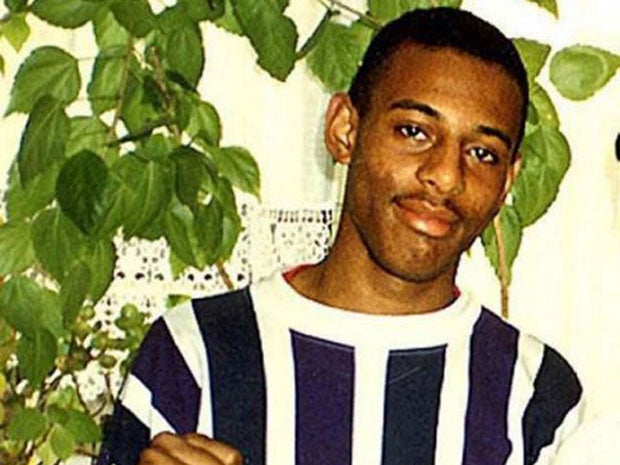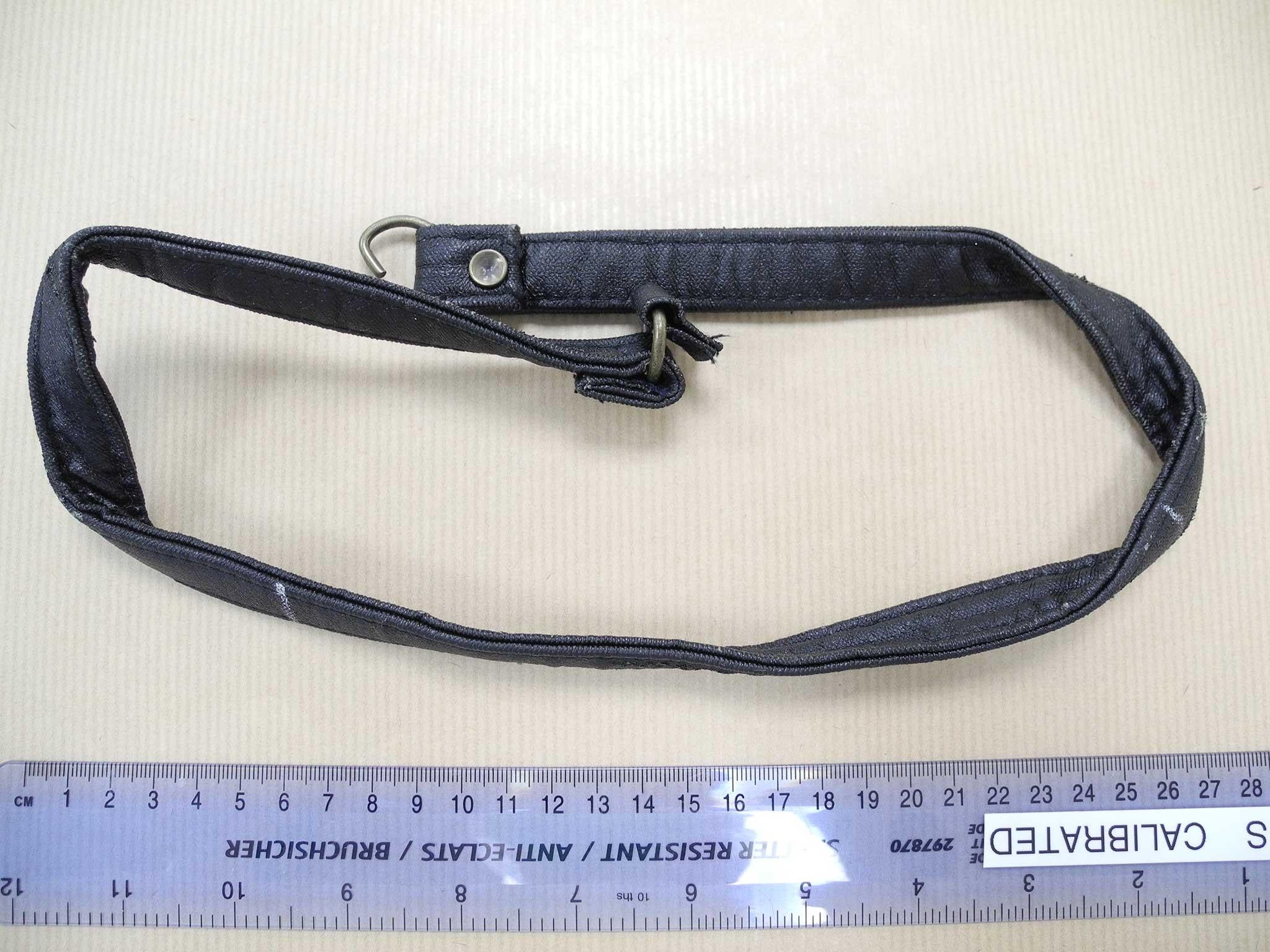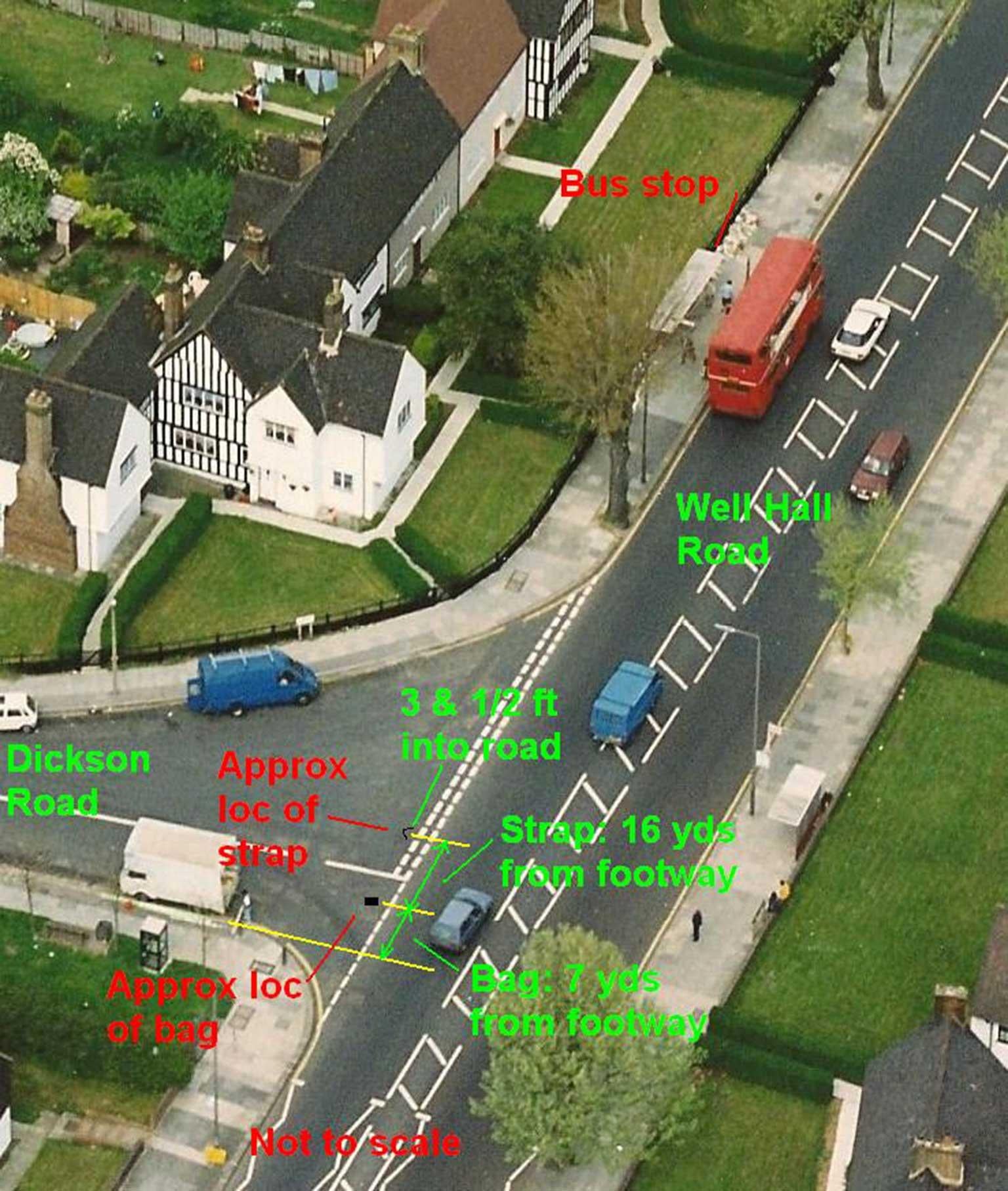Stephen Lawrence murder: police missed potentially vital clue because of confusion over punctuation
Potentially vital clue in the Stephen Lawrence murder hunt was overlooked for 21 years

Confusion over punctuation led to a potentially vital piece of evidence in the Stephen Lawrence murder case being overlooked for 21 years, a senior investigator has revealed.
Chris Le Pere, the man now leading a fresh investigation into the 1993 killing, said the error led to a bag strap that may have been used as a home-made weapon being wrongly recorded as discovered almost 100 yards away from where Stephen was targeted by racist thugs.
In fact, said Mr Le Pere, the strap was really found just five yards (4.6m) from the bloodstains marking the spot in Eltham, south east London, where 18-year-old Stephen was subjected to an unprovoked attack by up to six youths on April 22 1993.
Mr Le Pere said the error happened because in 1993 someone compiling a formal statement misread the punctuation of notes made at the murder scene.
This led to them mistakenly thinking the strap had been found at the same place as the next clue mentioned in the notes, moving it, in the minds of two decades’ worth of detectives, about 100 metres away from its correct location at the heart of the murder scene.
Police have now offered a reward of up to £20,000 for details leading to the prosecution of anyone involved in the murder and used a televised reconstruction of the attack to issue a public appeal for information about the strap.
“I believe this had been left at the scene by the suspects,” said Mr Le Pere, speaking hours before the reconstruction was broadcast on the BBC’s Crimewatch.

Mr Le Pere added that his belief the strap formed part of a home-made weapon was based on the fact that in 1993 a hefty claw hammer head with a strap attached to it, presumably so it could be swung at people, was found at the home of David Norris, one of the original suspects.
He explained that the bag strap did not have tyre marks on it, suggesting it had been lying in the road for only a short time before being discovered by the original investigators, and added: “It has been through a degree of violence. It has a bent buckle and has also been ripped.”
The discovery of the importance of the bag strap is the latest twist in a murder investigation that has been dogged by controversy for decades.
Sir William Macpherson’s inquiry into the failure of the original investigation concluded that the Metropolitan Police was “institutionally racist”, leading to a wave of soul-searching and attempts by the force to fundamentally change the way it approached race issues.
There have also been claims that the original murder inquiry was hampered by police corruption, which led last year to the National Crime Agency launching an investigation under the direction of the Independent Police Complaints Commission.
Mr Le Pere, however, stressed he believed the error over the bag strap’s location was “an honest mistake” instead of misconduct.

He said that in 1993 a senior crime scene examiner had visited the murder spot and noted the correct location of the strap – in the road, at the junction of Dickson Road and Well Hall Road, 16 yards (14.6m) from the pavement, roughly in line with Stephen’s own bag, which was seven yards (6.4m) from the pavement, and his blood, which was found 11 yards (10m) from the kerb.
But, said Mr Le Pere, when the time came for writing formal statements, the crime scene examiner was abroad on another investigation and unavailable.
Although the examiner subsequently signed the paperwork, said Mr Le Pere “Someone else – I don’t know who – wrote up the statements. The scenes examiners would have read [their statements] but they wouldn’t have had their original notes to refer to.”
Whoever did write the formal statement, said Mr Le Pere, misread the original, on-the-spot notes made by the crime scene examiner.
“The punctuation has not been read correctly,” said Mr Le Pere. “He [the crime scene examiner] correctly described the strap as being at the mouth of Dickson Road. The next exhibit was found outside 290 Well Hall Road – 80 to 90 metres [87 to 90 yards] away – and they [whoever wrote the statement] have joined these two exhibits together thinking they were both outside number 290.”
Mr Le Pere said he discovered the mistake in 2014 after reading the original crime scene notes. After realising its potential significance he and his police team took 70 samples of the 66cm-long, 1.7cm-wide black leather bag strap for DNA tests using highly sophisticated techniques that weren’t available to investigators in 1993.
These established that the bag had at one stage owned by a woman, leading to the theory that the strap was either unwittingly given to one of the attackers or taken from a stolen bag.
Since January Mr Le Pere’s team have conducted DNA tests on friends and relatives of the suspects in the original investigation, and on the seven women who had their bags stolen in Greenwich – the borough containing Eltham – in the seven days preceding the murder.
Mr Le Pere said more than 110 people were spoken to in connection with the strap. Two were not tested for medical reasons, 50 individuals volunteered samples, 12 did not respond to the police and 46 declined to undergo a DNA test.
Mr Le Pere said there was no legal obligation for people to volunteer a DNA sample, and there had been “an awful lot” of negative responses among “associates and relatives of the key suspects”.
Requesting information about the original owner of the bag, he stressed that they would be questioned as a witness, not as a potential suspect. “There is no evidence to suggest a woman was involved in the murder of Stephen Lawrence,” he said.
Stephen, a talented A-level student with ambitions to become an architect, suffered two deep stab wounds during the attack and was declared dead in hospital.
Neil and Jamie Acourt, David Norris, Gary Dobson and Luke Knight were arrested in connection with the murder in 1993, but only Neil Acourt and Luke Knight were charged with murder.
The case was dropped the same year due to questions over the reliability of witness evidence; a subsequent private prosecution by the Lawrence family also failed.
But in 2012, after the Government dropped the so-called double jeopardy rule, Norris and Dobson were convicted of the murder and sentenced to minimum terms of 15 years and two months and 14 years and three months.
The following year the Metropolitan Police Commissioner Sir Bernard Hogan-Howe said he had no plans to close the investigation and warned those who had joined Norris and Dobson in the attack on Stephen: “We are after you.”
Anyone with information is asked to contact the incident room on 020 8785 8310 or Crimestoppers, anonymously, on 0800 555 111.
